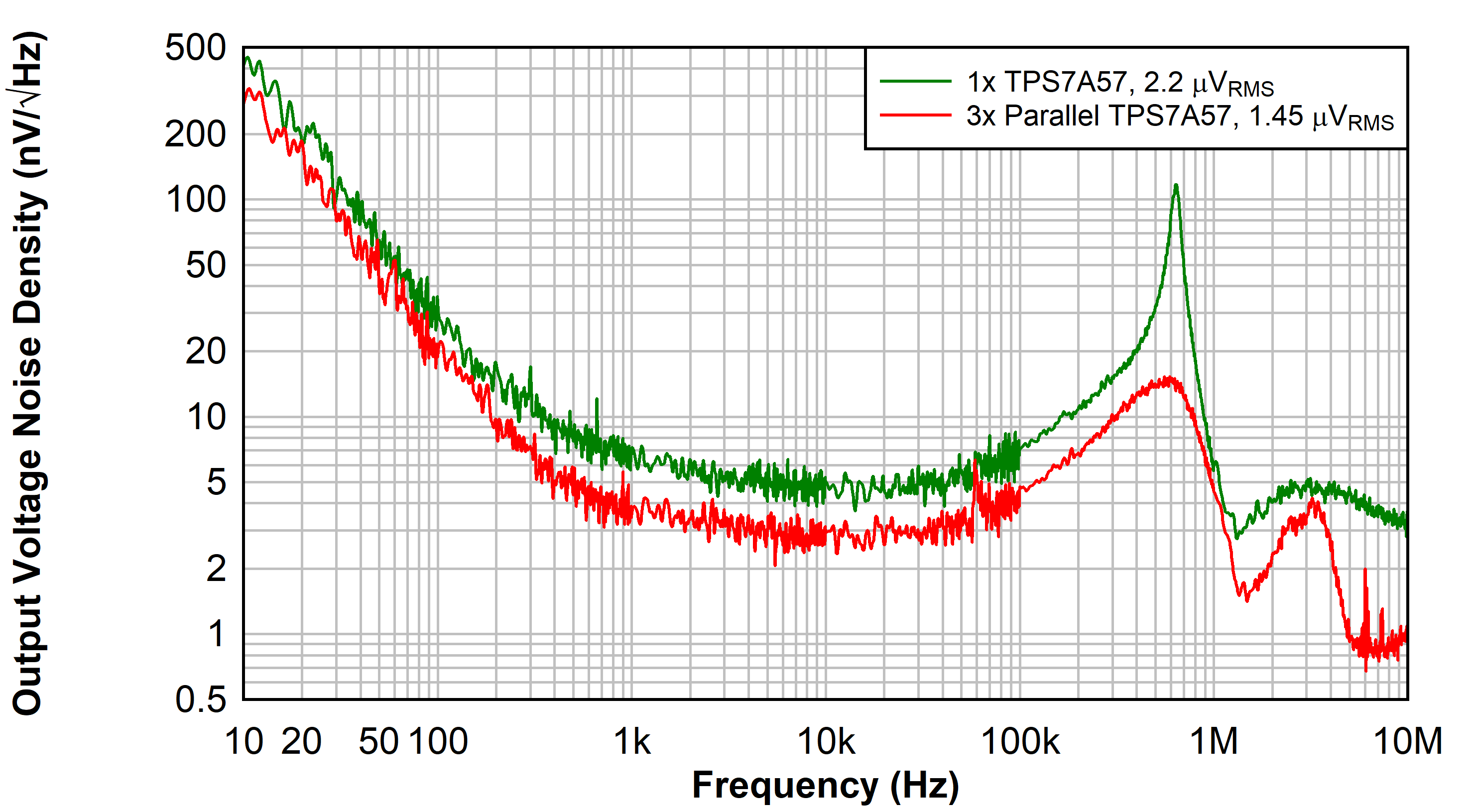SBVA100 December 2022 LP2992 , TPS786 , TPS7A30 , TPS7A3001-EP , TPS7A33 , TPS7A39 , TPS7A4501-SP , TPS7A47 , TPS7A47-Q1 , TPS7A4701-EP , TPS7A49 , TPS7A52 , TPS7A52-Q1 , TPS7A53 , TPS7A53-Q1 , TPS7A53A-Q1 , TPS7A53B , TPS7A54 , TPS7A54-Q1 , TPS7A57 , TPS7A7100 , TPS7A7200 , TPS7A7300 , TPS7A80 , TPS7A8300 , TPS7A83A , TPS7A84 , TPS7A84A , TPS7A85 , TPS7A85A , TPS7A87 , TPS7A89 , TPS7A90 , TPS7A91 , TPS7A92 , TPS7A94 , TPS7A96 , TPS7B7702-Q1 , TPS7H1111-SEP , TPS7H1111-SP , TPS7H1210-SEP
2.1 Noise
LDO's generate noise which can be modeled as a noise source, eO_single. When placing LDO's in parallel, each noise source is uncorrelated to the rest of the noise sources. The system noise eO_target then is reduced by the square root of the number of parallel LDO's. Thus the number of parallel LDO's required to meet a system noise density requirement is:
 Figure 2-1 Output Voltage Noise Density vs.
Frequency
Figure 2-1 Output Voltage Noise Density vs.
Frequency